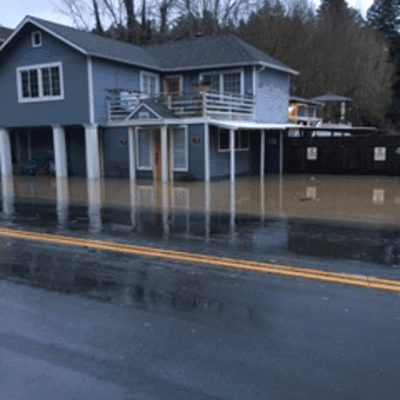
Flood Damage Restoration
Flood
A general and temporary condition of partial or complete inundation of 2 or more acres of normally dry land area or of 2 or more properties (at least 1 of which is the policyholder’s property) from one of the following:
–Overflow of inland or tidal waters
–Unusual and rapid accumulation or runoff of surface waters from any source
–Mudflow
Collapse or subsidence of land along the shore of a lake or similar body of water as a result of erosion or undermining caused by waves or currents of water exceeding anticipated cyclical levels that result in a flood as defined above.
How does this differ from other water damage?
Simply put, the main difference between a flood claim and a water damage is where the water comes from. Flood water comes from a natural source such rain, tidal surge, erosion. While any other water damage comes from structure failure such as roof leaks and wind driven rain, or infrastructure failure such as burst pipes or water heater leaks.
The danger of flood water
Flood water is highly dangerous. Since it is coming in through the outside, flood water is exposed to all the toxins and biohazards in the environment. Flood water often contains sewage, toxic waste, medical waste and more. It is not safe to expose humans or animals to the contaminants.
Most content exposed to flood damage cannot be saved. The flood damaged material needs to the removed and disposed of according to local laws. In addition, buildings inundated with flood waters are likely to quickly develop mold. They may also have unsafe from a structural standpoint. Do not enter any building until authorities deem entering them are safe.
How to protect yourself
Homeowners Insurance and Renters Insurance do not cover flood damage. However, many agents do sell flood insurance. Although many agencies sell flood insurance, the policies are all carried by FEMA. If you do not currently have flood insurance, but you are concerned about your risk of flood damage, learn more about purchasing flood insurance and filing flood claims at www.floodsmart.gov.
Flooding buildings can be extremely unsafe. Before entering a flooded location ask you self the following questions:
Has the building shifted off its foundation?
Does the foundation look damaged?
Is the building leaning to one side?
Does the building appear to be partly destroyed – missing a wall, for example, or partially crushed?
Is the roof line out of position?
Has the power been left still on?
Could there still be standing water in the building?
If any of these are true, then the building may collapse at any time or you may run the risk of electrocution. Only enter a building that qualified officials have declared safe. Don’t take any chances!
Even if a building has been declared safe, take precautions. Wear a face mask, gloves, and rubber boots. Protect yourself from exposure to potential toxic substances or mold.
West Coast Fire & Water can help.
West Coast Fire & Water is a licensed, certified, and experienced flood damage contractor. We have spent years working with FEMA and will tirelessly labor to cleanup and restore your home or office.

